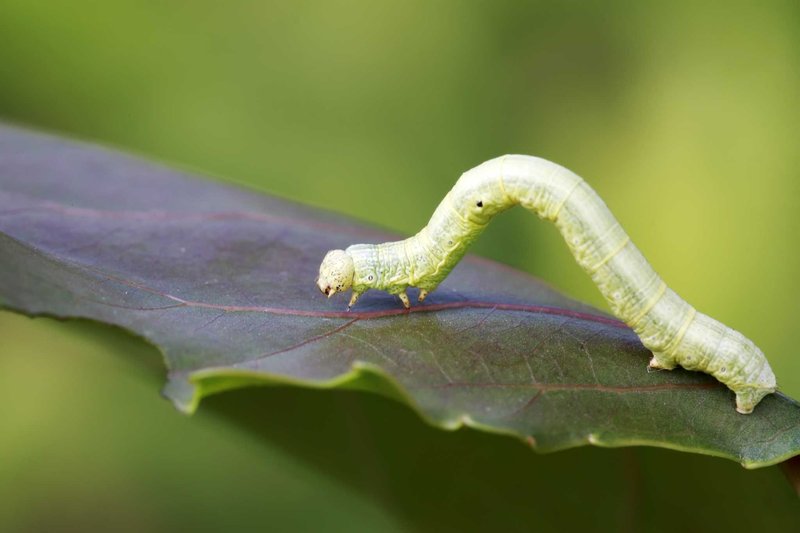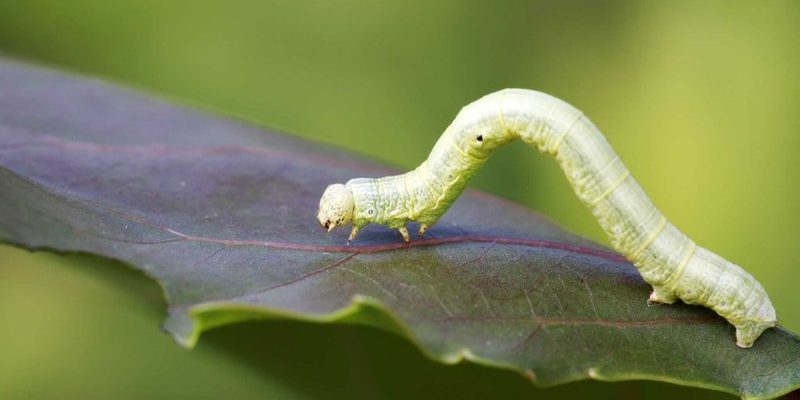
Inchworms are actually the larval form of various moth species, such as the Geometer moth. This means they’re in a crucial phase of their life cycle, where they’re busy munching away and preparing for the next stage: becoming a beautiful moth. The duration of their larval stage can vary based on several factors, including species type, environmental conditions, and food availability. So let’s dig a little deeper into this fascinating topic!
Understanding the Life Cycle of Inchworms
Inchworms go through a complete metamorphosis, which means they have four distinct life stages: egg, larva (inchworm), pupa, and adult (moth). Each stage plays a vital role in the insect’s development. The larval stage is especially important because it’s when inchworms focus on growth and feeding.
After emerging from their eggs, these little critters enter the larval stage. During this time, they’ll spend most of their days munching on leaves, which fuels their growth. With ample food and the right conditions, they will eventually transition into the next phase: pupation.
How Long Do Inchworms Remain in the Larval Stage?
The length of time inchworms stay in the larval stage can vary, but it typically lasts anywhere from **3 to 8 weeks**. Factors such as species, temperature, and food availability all play a role in how long they’ll remain in this stage. Here’s the thing: if conditions are perfect, they might grow and transition faster.
In cooler temperatures, however, inchworms may take longer to mature. It’s like waiting for your soup to boil—if the heat is turned down, it’ll take a bit longer to get to that perfect simmer. In contrast, during warm, optimal weather, they can thrive and reach maturity quicker.
Factors Influencing Larval Duration
There are several factors that can impact how long inchworms spend in their larval stage:
- Species: Different species of inchworms have varying development times. For example, some might mature quicker, while others take their sweet time.
- Temperature: Warm weather often speeds up growth, while cooler temperatures slow it down. If you think about it, it’s pretty similar to how we might feel in chilly weather—we just move slower.
- Food Availability: Ample food means faster growth. If an inchworm is dining on plenty of lush leaves, it will mature more quickly than one struggling to find a meal.
Understanding these factors helps us see why some inchworms appear to grow faster than others. Just like how we all have our own pace, inchworms do, too!
The Importance of the Larval Stage
The larval stage is critical for inchworms. It’s during this time they store energy and develop into their adult forms. Think of it like a teenager preparing for adulthood—there’s a lot of learning and growing to do!
**Why does this matter?** Because the food they consume during this stage fuels their bodies for the next phase. If they don’t eat enough, they might struggle to reach their potential. So, hooking them up with a good diet of leaves is key to their success.
Signs That Inchworms Are Ready to Pupate
Now that we know about their larval stage, how can you tell when an inchworm is ready to move on to the next stage? Typically, inchworms will stop feeding and wander off to find a safe place to pupate.
You might see a few telltale signs:
- Reduced Activity: They’ll become less energetic—almost as if they’re winding down after a long day.
- Color Changes: Some inchworms may change colors, indicating they’re ready for the big transition.
- Seeking Shelter: They will look for a spot to attach themselves and form a cocoon.
Watching inchworms prepare for pupation is a great reminder of their amazing transformation process.
Inchworms vs. Other Larvae: How Do They Compare?
You might be wondering how inchworms stack up against other types of larvae. For instance, caterpillars, which are the larvae of butterflies and other moths, may have different feeding habits or larval durations.
Generally, inchworms have a unique way of moving that sets them apart. Rather than crawling like many caterpillars, they “inch” forward—hence their name! Each has its distinct characteristics, but all share the common goal of growth before transitioning into their adult forms.
Inchworms lead a fascinating life from the moment they hatch to when they emerge as moths. Staying in the larval stage for **3 to 8 weeks** allows them to focus on feeding and growing. Understanding these little critters and their growth process helps us appreciate the cycles of nature.
Next time you spot an inchworm slowly inching its way along a branch, remember the hard work it’s putting in to prepare for its exciting transformation. Just like all of us, inchworms have their own paths to follow—and it all starts with that important larval stage!

